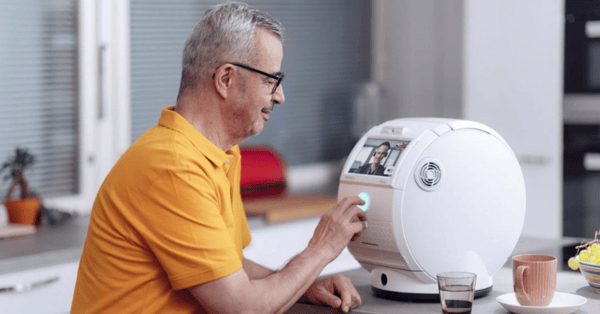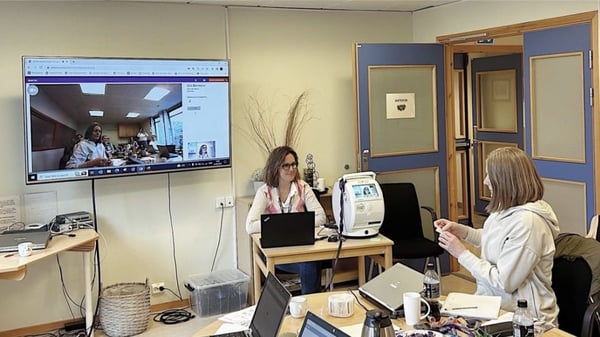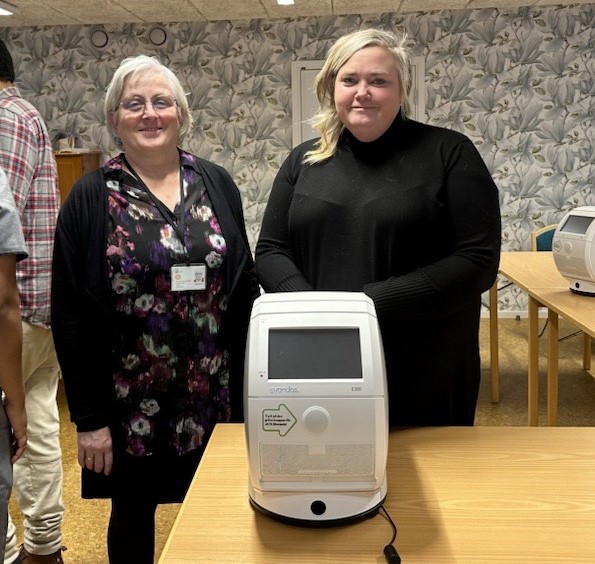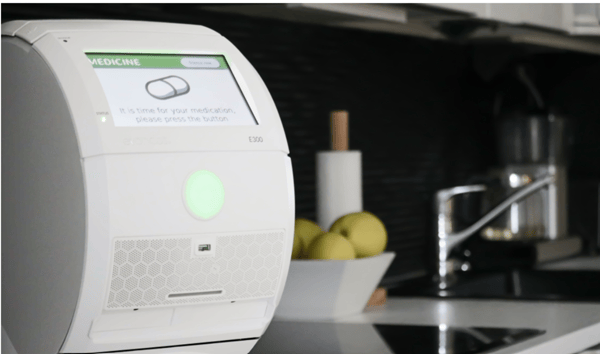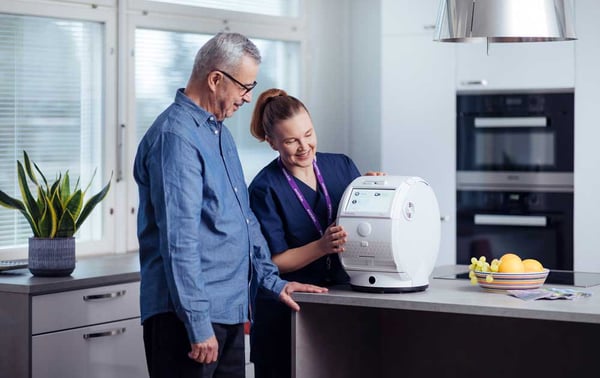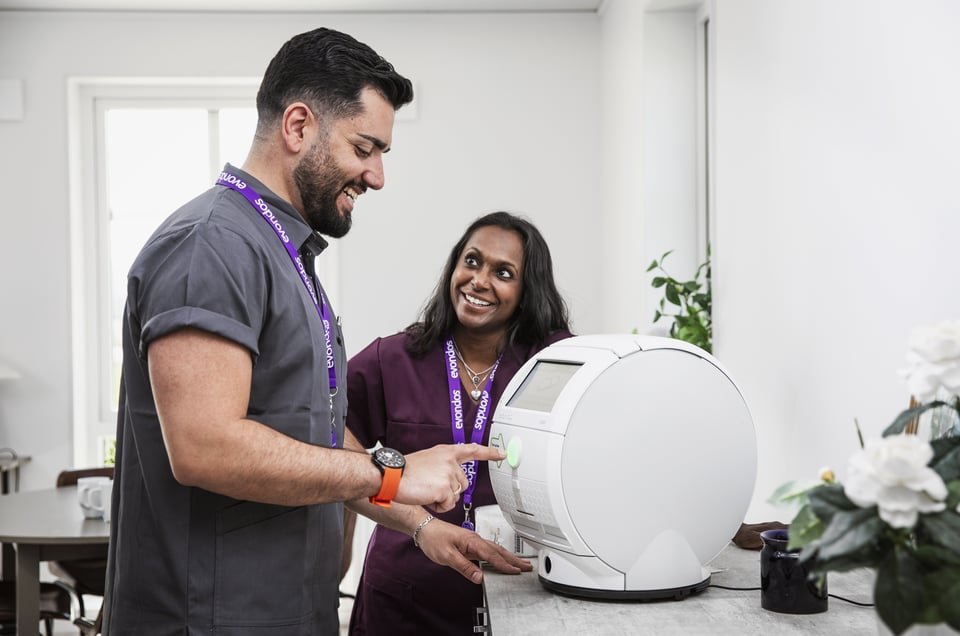
The Evondos service has revolutionised how homecare organisations operate, whether allowing them to cover a bigger area more easily or meeting the population's growing needs with strained resources.
Here, we look at how the Evondos service has achieved operational benefits for Siun Sote homecare services.
The challenge
As populations continue to age, homecare services must grow to meet the needs of elderly patients. However, more personnel are needed to meet this growth, meaning that providing and developing homecare services is becoming increasingly difficult, and the cost of homecare has increased.
So, how can efficiencies be gained in homecare? Can we do more with less while still providing and maintaining a high level of service for patients?
The solution
The Evondos medication robot does exactly that. Our service ensures a high standard of pharmacotherapy, guiding homecare clients to take the correct medicine, in the prescribed dose, at the right time.
The robot provides guiding instructions, prevents re-doses and locks away missed doses to avoid compromised safety.
All of this is logged and can be monitored remotely by care organisations and relatives, facilitating enhanced patient independence, increased safety and reduced risk of human error.
The results
In addition to experiences at Siun Sote, there are several other organizations who have also reported significant improvements in their areas. For example, the Central Ostrobothnia Joint Municipal Authority for Social and Health Services, Soite, has reduced the number of homecare visits. On top of that, The Karviainen Joint Municipal Authority for Primary Health Care and Social Welfare has reduced travel times and costs.
The number of visits decreased
Due to not needing physical homecare presence to dispense medication, the number of visits decreased by 19.2%, which equates to 2,246 visits per month.
Not only does this save time, resources and costs for homecare organisations, but in some cases, it can free up an estimated 4,242 hours a year for nurses to spend in other critical areas, such as wellbeing checks, caring and more.
The morning rush was alleviated
A common issue with homecare is that there's often a peak of visits during the morning hours due to patients needing assistance with their medication. Because the Evondos robot does this without additional human intervention, the need for morning visits was reduced.
In total, immediate client work time decreased by 22.6%, equating to 110 hours per month.
This time could be reinvested into longer visits with patients who need it and the development of homecare services.
The deterioration of patients' conditions were slowed
Naturally, as patients grow older, their conditions can deteriorate or they can develop new ones altogether. This can result in a further strain on homecare services, particularly if added medication guidance is required.
Thanks to the Evondos service, the results showed that patients' conditions didn't deteriorate as quickly. Increased independence and active morning routines may have affected this.
Homecare visits for those without Evondos increased by 35%, whereas those with Evondos only increased by 20%.
Want to dive deeper into the statistics?
Access our full whitepaper, where you can see deeper insights, comparison graphs and industry information that will inform your future decisions.


